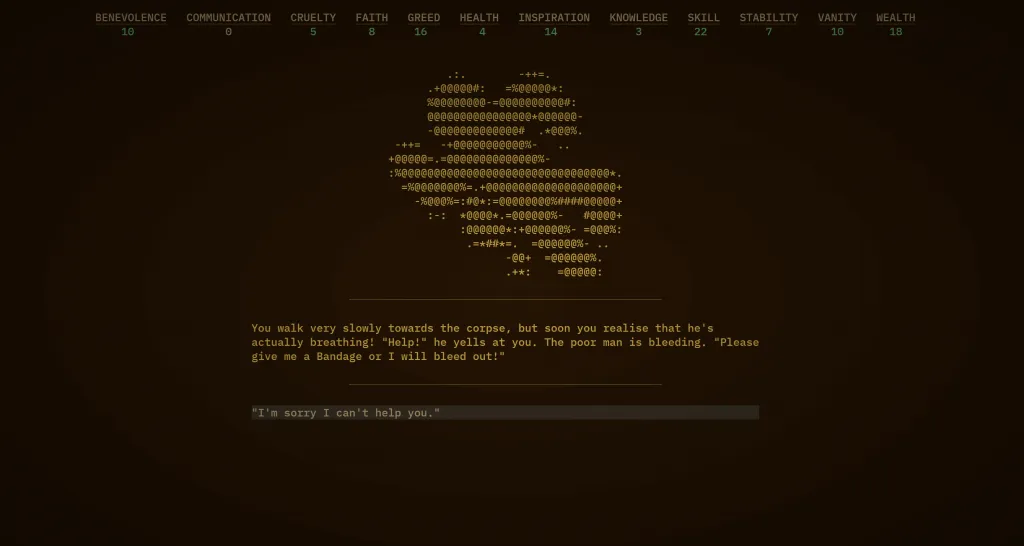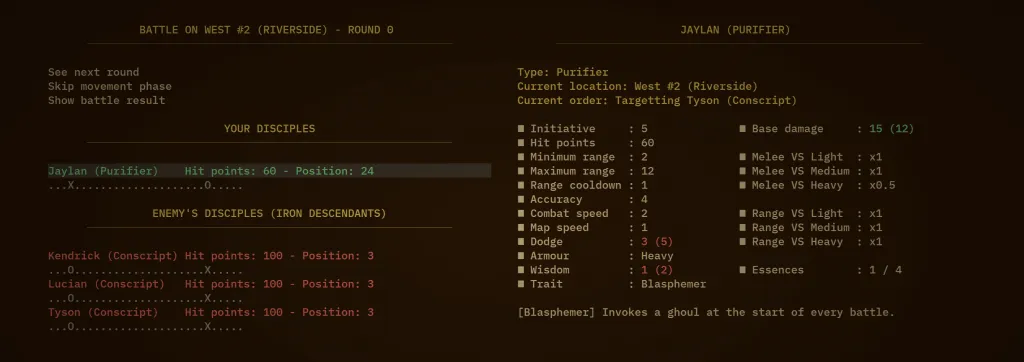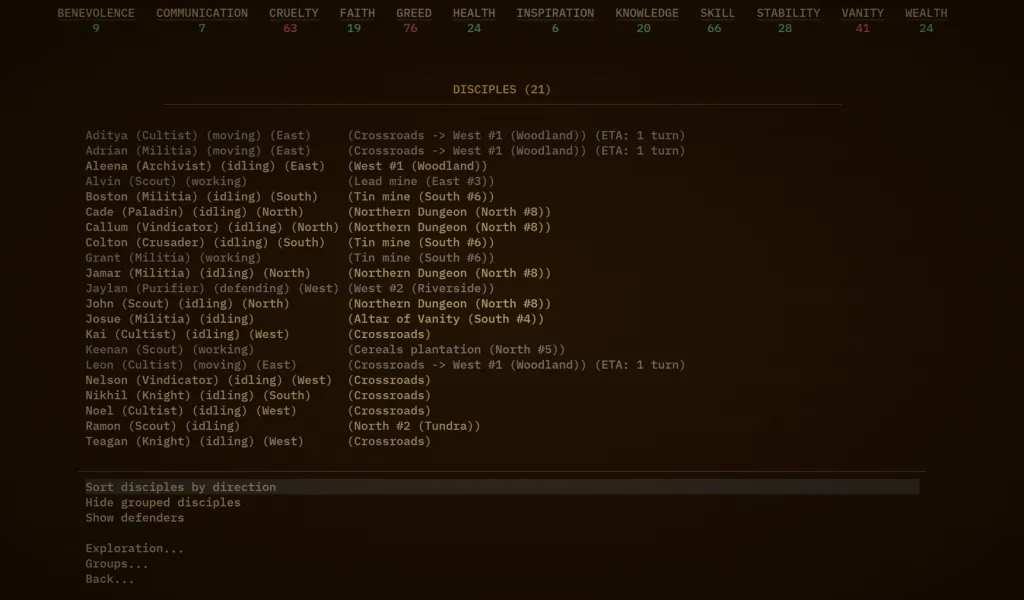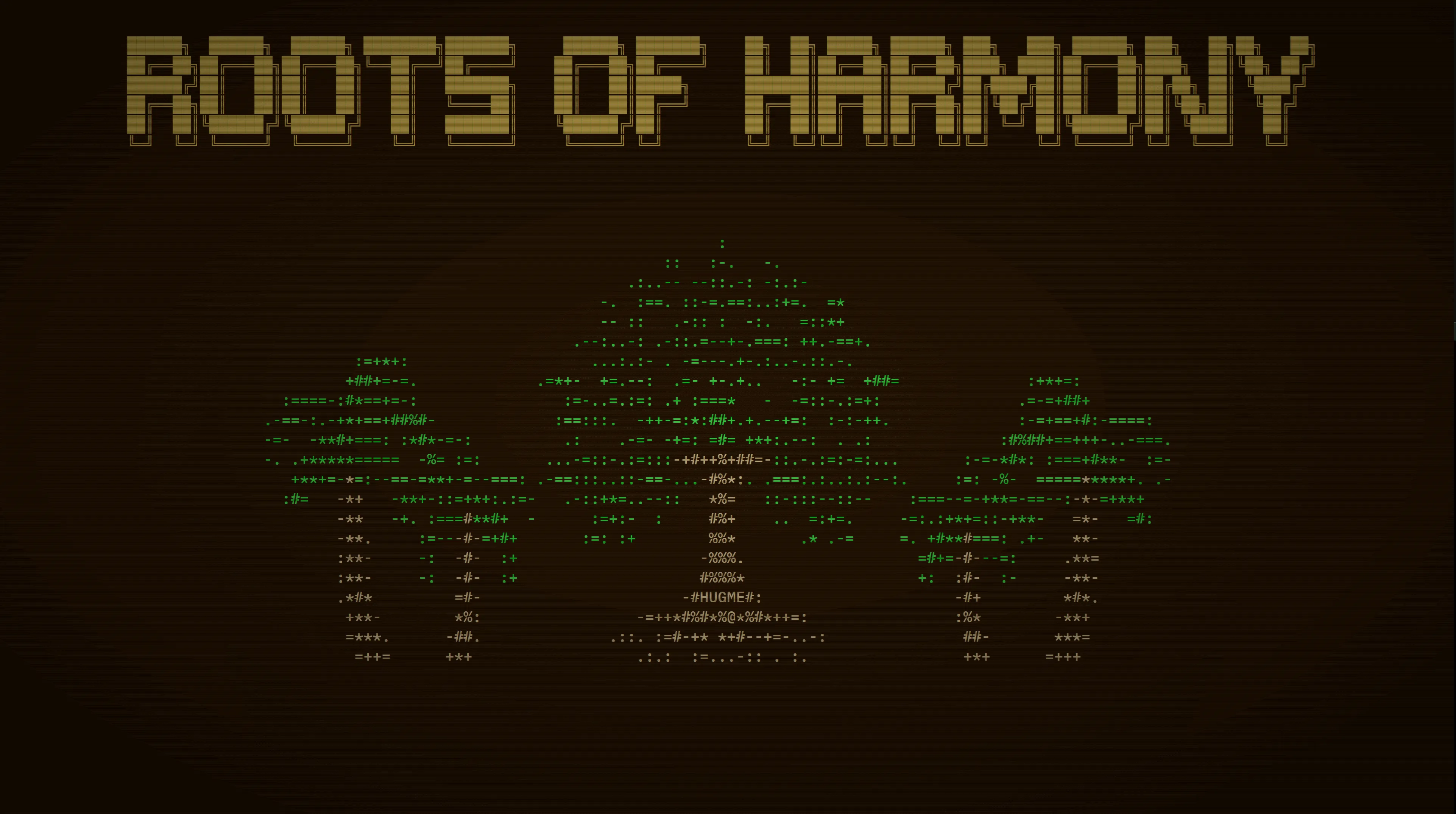I have a confession. As much as I like a good strategy game, my favorite part is always watching the action unfold. In a Total War game, you can find me zooming in as the battlelines come together, slowing down time to get the best action shots.
In Civilization, I love to see how the map develops over the course of the game as wonders are built, districts spring up, and factions expand. With that in mind, I decided to instead spend some time over the past week playing a game that markets itself as “100% gameplay, no graphics” to try and get some more appreciation for the book rather than its cover… So let’s talk about it.
Roots of Harmony is a text-based 4X game and the first Steam release by solo developer Guillaume Beaumel. You did read that correctly: a 4X game confined entirely to a text-based terminal. Initially, this seemed a rather outlandish proposal, but with games like Dwarf Fortress, Caves of Qud, and Warsim: The Realm of Aslona being so popular, there is certainly a market for strategy titles that forgo graphics in favor of deep and complex systems.
Yet… that’s not really what Roots of Harmony is. Not to say the game is shallow of course, there are a lot of systems here that you could spend time tinkering about with but the overall focus is around delivering a more bite sized 4X experience akin to survival colony sim… and a difficult one at that.
Explore
So how does it all work? Well, your little colony conveniently finds itself at a crossroads, both literally and figuratively. To your cardinal points lie many unexplored tracts of land filled with varied factions, special locations and culminating in the fortress of one of four great empires. On your starting point, you can build some initial buildings to find your burgeoning settlement, but you will swiftly realize that space is at a premium, and if you want to acquire some more land, you are going to have to get to bludgeoning some locals.
This kicks off what is essentially a text-based juggling act. Expand too fast, and you’ll have plenty of building space but an island full of people who want to help your tribe experience some light genocide. Expand too slowly, and the great empires will eventually take note of your insignificant little settlement and start sending soldiers your way, which your economy will be woefully undeveloped to deal with.

It’s not just the diplomacy either, almost all buildings will take one of the twelve “resources” and convert it into others leading to building chains that often feel very precariously balanced… would certainly be a shame if an arsonist were to burn something down.
While you are encouraged to specialize in specific resources that will help you produce more soldiers, or disciples as the game refers to them, you are also punished for having too much of a resource as well and if you ever drop into the negatives, you better make sure you keep all your plates spinning and at the appropriate speed.
Expand
I was initially skeptical going into it, but Roots of Harmony manages to capture many familiar 4X elements in a text-based package. As you explore locations you’ll find that some land is more useful than others or comes with natural bonuses.
Maybe it has a unique setting like a farm or dungeon, many of these can be investigated to find further treasures. I always like this discovery phase in any game, and Roots of Harmony is no different as you branch out and scout each area to find places to work or verdant lands to conquer.
As you develop your empire you will unlock higher town levels to give further build options. Compared to other titles in the genre, though, I never really felt like my economy got “rolling” due to the resource trade-offs being made. As I mentioned earlier, this adds another element to the balancing act, On one hand, it makes the building choices and placement feel a lot more strategic but can also lend you spending more time on crisis management than empire planning.

If that is a bad thing or not is going to depend on your view, what starts off as a game of optimistic and interesting exploration rather quickly turns into a more unforgiving survival experience. Maybe I am just unlucky, but I could swear the ratio of positive to negative events got progressively lower as the game went on.
They happen at random and vary from quite a literal toilet humor to more classic management problems. While they are certainly welcome to keep each turn feeling fresh, and they usually give you the choice of multiple reward/penalty options, I sometimes just felt the game was giving me a middle finger for no particular reason, and it was not always fun to overcome.
Exterminate
So you have explored, and you have expanded, or at the very least, you set your greedy little eyes on where you would like to expand to. Let’s talk combat. To claim new lands, you are going to have to beat the enemy disciples with your own, and this happens on a linear plane; after setting your troops, some initial orders around who to target and how the battle will play out automatically, giving you a turn-by-turn breakdown.
Certain types of disciples have very defined strengths and weaknesses, and battle results can vary wildly if you aren’t paying attention and send your lightly armored troops in to fight someone who just happens to deal triple damage against them. On the surface, it’s a relatively simple combat system with a slightly “Rock, Paper, Scissors” feel, depending on the armor type.
In reality, there is a bit more nuance given the characteristics sheet, and while there is no equipment, you are able to imbue your disciples with certain essences, allowing you to boost their key stats or stock up on any elixirs you find for a swift heal.

Initially, I incorrectly assumed fights would come down mostly to those who had the most troops due to your initial units having relatively minimal modifiers. This assumption was swiftly challenged by groups like the one above. A view taken after my previous group was wiped because I didn’t realize all 3 enemies had the ability to summon their own ghoul and double their numbers in an instant.
The system works well, and assuming you don’t mind the slight unpredictability of an auto-battle-style system, it adds a layer of strategy to your invasion and defense. Having said that, it does feel very punishing when you lose a significant fight, given the amount of time you have to spend moving troops to fill a hole in your defense in a particular direction as well as the fact you can only recruit one unit a turn, regardless of resource stockpiles.
A lot of this has come down to personal taste if you prefer a more punishing or more chilled 4X experience yet there is one big hurdle that any prospective player will have to get over regardless of taste. On top of the enemies and aggressive wildlife, you will also find yourself fighting with the UI. Part of this comes with the territory, I spoke to the developer about some usability changes however was advised there are a number of technical limitations in how the game was made.
For big fans of text-based games, this is likely par the course, but compared to more modern 4X games, resource management, and especially unit management with large unit numbers, can feel very unwieldy. The game does alleviate this somewhat by allowing you to group multiple units together to act as one but I was certainly playing in a more inefficient manner just because I didn’t want to have to click through as many screens to manage all my units.

That’s about it: gather your units, set forth, and achieve the six goals laid out before you to become the dominant empire to set down your Roots of Harmony….fed by the blood of your enemies.
Final Thoughts
It’s rather hard to judge a game like this too harshly. For one, there really isn’t too much out there like it, and secondly, it costs about the same as your morning coffee, with only one of those two options allowing me to rip the horn off a unicorn or encounter a cosplaying fairy. In that regard, it feels like a pretty good value for money.
I don’t think the replayability is going to be that high for most people, though. While the lands are somewhat randomised there isn’t a huge amount of variation in the overall strategy. There is a New Game +, and I can see a second run-through might be justified to specialize in different resources and change your build order (or if you are just a plain old masochist), but I feel like Roots of Harmony’s has its own place as more of an entry point for those who want to dive into ASCII based games but feel the current market leaders are a bit too overwhelming.
Frankly, it’s also just interesting to see more titles popping up in this space so if the idea of a text based 4X piques your interest then check it out, it just got a demo so you can even try it without purchase.







